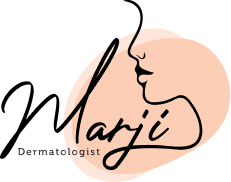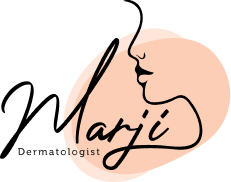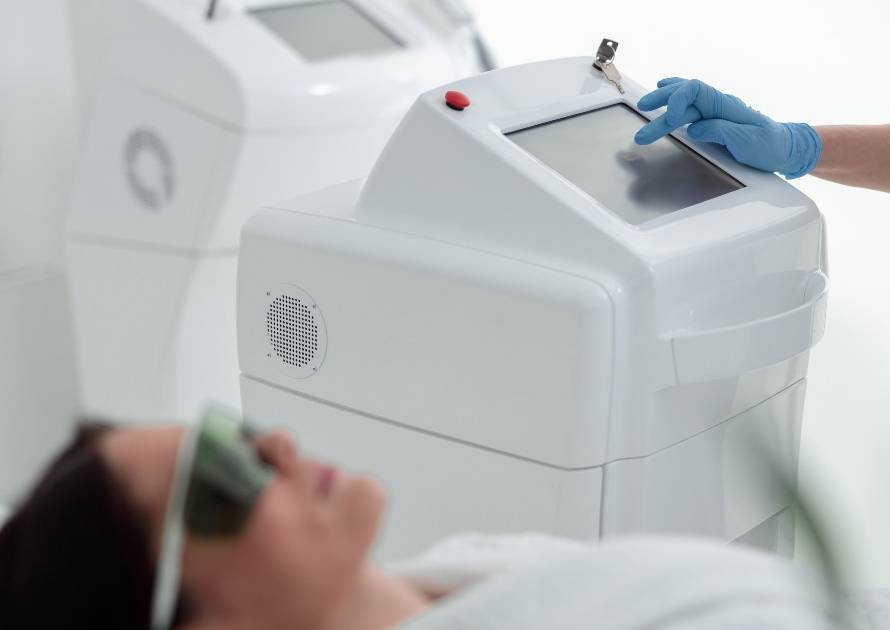Pregnancy, weight loss, weight gain, and other factors can lead to visible stretch marks on the skin. The skin is the largest organ in the body. It has a remarkable ability to expand and contract as much as needed.
Although the skin is strong and elastic, its supporting tissues can be damaged if they stretch too far or too quickly. The rapid expansion and stretching of the skin can lead to stretch marks. So, what are stretch marks? What causes them? How can they be treated? All of these questions and more will be addressed throughout this article.
What Are Stretch Marks?
Stretch marks, or what is medically known as striae, are extended streaks in the skin. Usually, these stretch marks have a different texture from normal skin and are located below the skin. Stretch marks can either be horizontal or perpendicular and can appear anywhere in the body.
The most common body areas on which stretch marks appear are the abdomen, breasts, thighs, buttocks, and upper arms. Stretch marks are usually asymptomatic and harmless, but people choose to treat them for cosmetic and aesthetic reasons. Stretch marks can be pink, red, brown, black, silver, purple, or white. They usually start off darker and fade over time.
Causes and Risk Factors of Stretch Marks
Sudden growth or weight gain can usually cause stretch marks. However, there are different factors that cause stretch marks to form on your body. You are more likely to get stretch marks on different parts of your body in the following cases:
- If you are a female
- If you are going through puberty
- If you lose or gain weight quickly
- If you are pregnant
- If you are overweight
- If you have had a breast implant surgery
- If you do bodybuilding
- If you use some kinds of steroid creams or tablets
- Due to genetic predisposition
- Due to genetic diseases like Marfan syndrome and Cushing syndrome.
If you cannot tell for sure why you developed stretch marks, you can always consult a dermatologist and explain your situation and medical history to them, and they would be able to help you determine the cause of the stretch marks that you have on your body.
What Are the Different Types of Stretch Marks?
There are many types of stretch marks. However, there are main types that dermatologists usually classify into two:
- Striae Rubra: These are stretch marks that are classified as the earliest presentation of striae distensae and are characterized by red color. Over time, striae rubra evolve into striae alba, which is the second main type of stretch mark.
- Striae Alba: These are the older stretch marks that have developed over time. Over time stretch marks lighten and develop a pale, wrinkled appearance.
Treatments of Stretch Marks
There are various treatment methods that can be used to treat different types of stretch marks. Here are some of the most effective treatment methods:
- Radiofrequency micro-needling: Radiofrequency micro-needling eliminates scar tissues, including those that make up stretch marks, by stimulating the body’s natural healing processes. Moreover, it increases your body’s production of collagen and elastin.
- Dermapen and derma stamp: Dermapen Treatments encourage the production and distribution of new collagen to remodel the stretch mark scars and significantly reduce their appearance.
- Vascular laser (pro-yellow laser) to remove red color: Vascular lasers target and destroy the blood vessels, which causes the redness and can help with slowing and treating early-onset stretch marks.
- Fractional resurfacing laser: Fractional resurfacing laser delivers pulses of energy into your skin which creates new collagen in the area. This allows the body’s natural healing process to take over, which improves the overall appearance of stretch marks.
- Enzymes injected like collagenase: Injecting collagenase into the area of stretch marks stimulates the production of collagen, which improves the appearance of stretch marks in the treated area.
Frequently Asked Questions (FAQs)
This section sheds light on the answers to the most commonly and frequently asked questions regarding stretch marks and their treatment methods.
Can I prevent stretch marks?
Yes, you can prevent stretch marks from developing by controlling your weight, avoiding the sudden increase in weight, keeping your skin hydrated, and frequent massaging for the skin. However, sometimes, even with all of these precautions taken, you can get stretch marks.
What is the best technique to treat stretch marks?
The answer to this question can only be clear to you after visiting your dermatologist. The best technique for your stretch marks depends on your condition. The doctor will be able to determine whether you need a single treatment or a combination of multiple treatments.
How many sessions of treatment do I need?
The answer to this question differs depending on the site of the stretch marks, the technique used for treatment, and the quality of your skin.
Which responds better to treatment, red or white striaes?
Usually, red new straie responds better to treatment because they’re newer than white striaes and therefore less stubborn to treat.
Can my skin go back to how it was before?
Usually, it is not possible to see a 100% improvement in the site of the stretch marks. However, the results are almost always satisfying to patients.
Can tanning or camouflage tattoos help hide stretch marks?
Not always, especially in people with darker skin, as the skin inside the striae is less likely to tan. Regarding tattoos, it’s not recommended, as the skin color keeps changing, and the beige-colored tattoo is the hardest to remove, so it would be difficult and painful to try and remove it.



